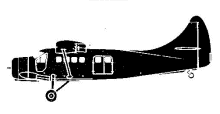Incident Overview

Description
Climbing through 75 feet after takeoff, the Otter suddenly turned left and descended. The airplane hit two trees and caught fire. The flight manifest showed that the aircraft was carrying a total load of 804 kilogrammes. However, the correct weights of the actual load including passengers’ weight on board the aircraft and did not include the pieces of baggage which the passengers carried by hand. The aircraft’s gross weight at takeoff was within the maximum allowable payload. Since most passengers were seated at the rear, the aircraft’s centre of gravity limit was considerably exceeded. With this condition the pilot may have experienced extreme difficulty in maintaining the longitudinal stability of the aircraft after becoming airborne. This was further aggravated by the cross wind, gusty air and the high ambient temperature. PROBABLE CAUSE: “The uncontrollable stall at low altitude which resulted from the abrupt steep climb immediately after takeoff. Contributing factors were: 1) The improper loading of the aircraft; and 2) The prevailing gusty wind with a relatively high ambient temperature”
Primary Cause
Uncontrolled stall at low altitude due to abrupt steep climb following takeoff.Uncontrolled stall at low altitude due to abrupt steep climb following takeoff.Share on:





